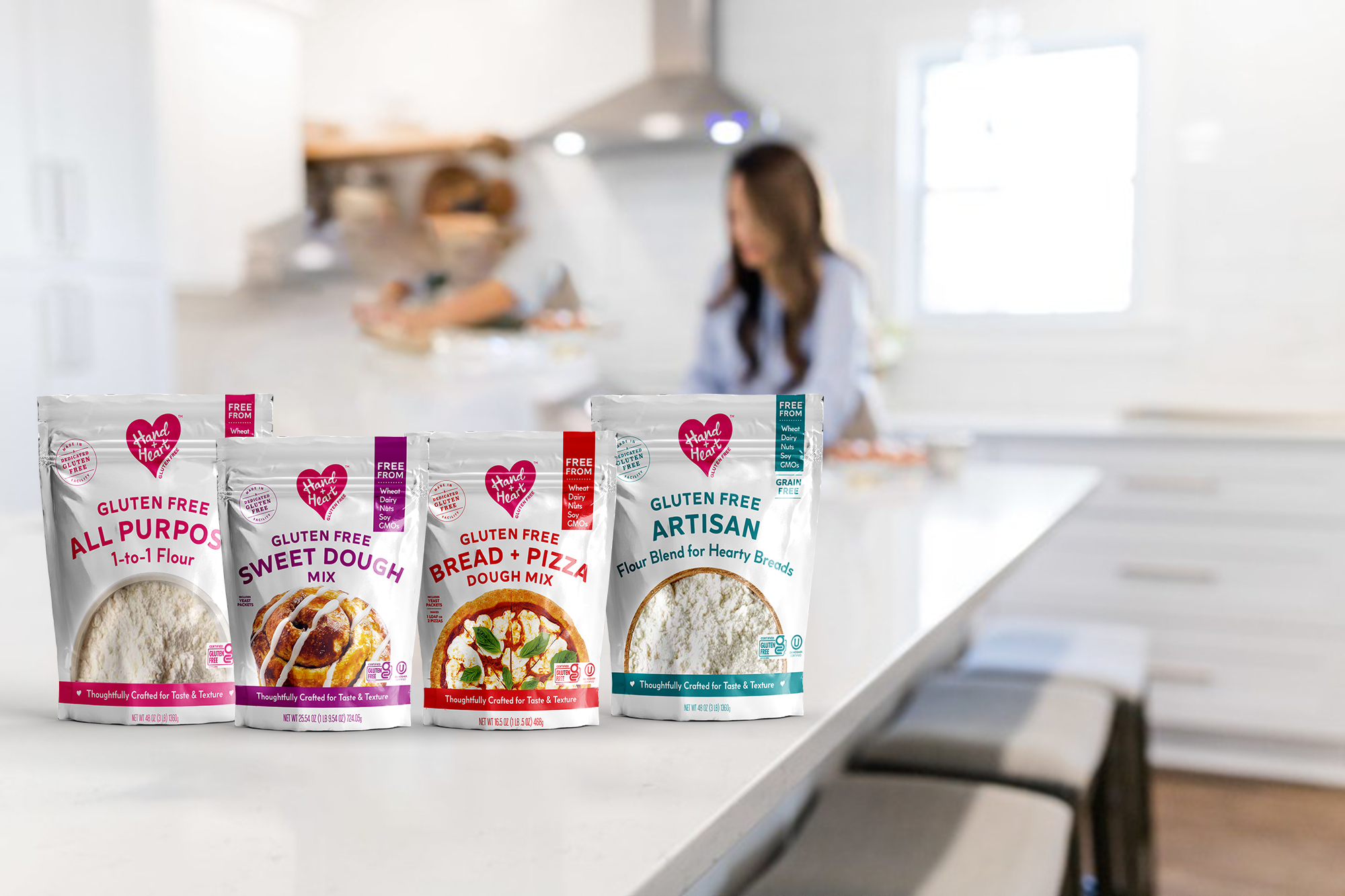Gluten-Free Flour: What to know
Hand + Heart Gluten Free
April 22, 2024

Baking is an art that brings joy to many, but for those with gluten sensitivity or celiac disease, traditional wheat flour can be a culinary nemesis. Fortunately, the rise of gluten-free flour has paved the way for delectable treats without gluten-induced discomfort. In this blog post, we will dive into the world of gluten-free flour, discussing their differences in texture compared to regular flour and highlighting some common gluten-free flour options.
The Gluten-Free Flour Revolution
Gluten is a protein found in wheat, barley, rye, and their derivatives. It plays a crucial role in providing structure and elasticity to baked goods. However, for individuals with gluten-related disorders or those choosing a gluten-free lifestyle, alternatives are needed. Enter gluten-free flours, which have become increasingly popular in recent years.
Rice Flour
One of the most common gluten-free flour is rice flour. It is made from finely milled white or brown rice and has a neutral flavor. Rice flour is often used in gluten-free baking to achieve a smooth texture and is a staple in recipes for cakes, muffins, and cookies. While it can create a soft and tender crumb, it may also result in a slightly grainy texture.
Almond Flour
Almond flour is made from finely ground blanched almonds and is a favorite among those following a gluten-free or low-carb diet. It imparts a rich, nutty flavor and is often used in recipes for macarons, financiers, and gluten-free pie crusts. Almond flour tends to produce a moist and dense texture, making it ideal for some baked goods.
Coconut Flour
Derived from dried, defatted coconut meat, coconut flour has a unique texture and flavor profile. It is exceptionally absorbent, which means you need less of it in recipes compared to other flours. Coconut flour adds a subtle coconut taste and can result in a soft, airy texture, making it perfect for pancakes, waffles, and even certain bread recipes.
Oat Flour
Oat flour is made by grinding rolled oats into a fine powder. While oats themselves are naturally gluten-free, cross-contamination during processing is a concern for those with celiac disease. Look for certified gluten-free oat flour to ensure its safety. Oat flour adds a slightly sweet and nutty flavor to baked goods and can yield a tender and moist texture, making it great for muffins, pancakes, and quick bread.
Tapioca Flour
Tapioca flour, also known as tapioca starch, is a versatile gluten-free flour made from the root of the cassava plant. It has a mild, neutral taste and is often used in combination with other flours to improve texture. Tapioca flour can provide a chewy and elastic quality to gluten-free bread, pizza dough, and certain desserts.
Texture Differences Compared to Regular Flour
Now that we’ve explored some common gluten-free flour, let’s get into the texture differences between gluten-free and regular wheat flour.
Absorbency: Gluten-free flours tend to be more absorbent than wheat flour, which means they require more liquid in recipes. Adjusting the liquid content is essential to achieve the right consistency and prevent dryness in your baked goods.
Density: Gluten-free flours can produce denser baked goods compared to their wheat-based counterparts. This is because gluten contributes to the light and airy texture found in traditional bread and pastries. To counteract this density, gluten-free recipes often rely on leavening agents like baking powder and xanthan gum.
Tenderness: Some gluten-free flours, like almond and coconut flour, can create a tender and moist texture in baked goods. However, they may not hold their structure as well as wheat flour. This is why it’s common to use a combination of gluten-free flours to achieve the desired texture.
Grittiness: Rice flour, in particular, can introduce a slight grittiness to baked goods due to its granular nature. To combat this, you can blend rice flour with smoother-textured flours or use a finer variety of rice flour.
Hand + Heart Gluten Free: The ONLY Brand of Flour You Need in Your Kitchen
Hand + Heart isn’t just another gluten-free flour; it’s a game-changer in the world of baking. At its core is a uniquely crafted blend, combining ingredients like rice flour, brown rice flour, and several starches. This mix guarantees that your baked goods have that perfectly soft and tender texture we all crave, without any hint of dryness or grit!
Our brand thoughtfully caters to various baking needs by offering specialized mixes. Whether you’re in the mood for some crusty bread, delicate pastries, or a flavorful pizza, Hand + Heart ensures you have the right blend for the job.
Beyond just being gluten-free, Hand + Heart thoughtfully crafted a blend that is inclusive of sensitivities and allergies. Our flours are free from the top 9 allergens and are non-GMO, meeting various dietary needs. This dedication extends to their grain-free options, making sure even those on the strictest diets aren’t left out of the baking fun!
While the ingredients are extremely important, what really sets us apart from our competitors is the authentic love and passion we have for the gluten-free community. Hand + Heart is backed by certifications like the Gluten-Free Certifications from GFCO and UO Kosher Certification.
The Takeaway
In conclusion, Hand + Heart is more than just a gluten-free flour. It’s a testament to quality, inclusivity, and a genuine love for baking.
There is no reason for you to crave the pastries and breads you love while on your gluten-free journey and NOT be satisfied with the taste and/or texture of what you are eating.
If you’re looking for a flour that promises excellence and turns every bake into a special treat, then Hand + Heart Gluten Free Flour and Mix belongs on your shelf. Check out our RECIPE page for ideas!
